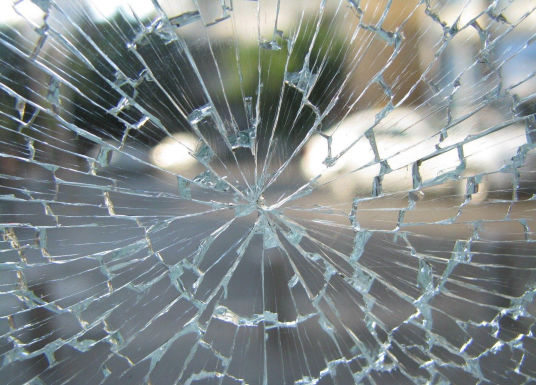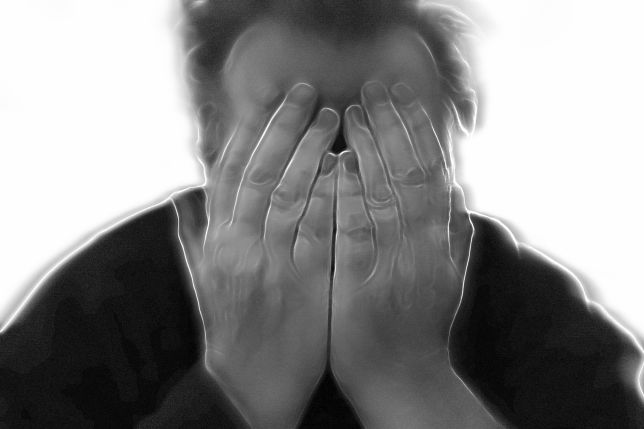Call from prison nearby for inmate who had been stabbed in chest 15 times. Physician on site assessing patient concerned about chest, wanting x-ray and sutures.
30yo male arrived via EMS sitting bolt upright on stretcher. Patient has a slim build, complaining of some difficulty breathing noting some accessory muscle use, and not wanting to move his head. No shirt, lots of bulky dressings covering wounds (especially shoulders) and small punctures around body.
EMS – started IV, gave dose of TXA, O2 via NC @5lpm – Spo2 95%.
BP 155/95
HR – 132
T – 36.7
R - 32
No stab wounds noted to anterior of chest. 20 wounds found on back were mostly superficial and less than 1cm.
RCMP inform weapon was a stainless-steel rod approx. 5mm diameter, 25cm long and sharpened at one end with a makeshift handle.
Most concerning wound was posterior left lower back – covered with three-sided dressing and small amount of blood.
Initial exam – no major concern from most of the wounds, still suspicious due to pt dyspnea.
POCUS – want to scan the least dependent area of the chest due to air rising. Ideal position is supine to allow air to rise to anterior aspect of lungs. 3-4 intercostal.
Attempted to lay down but to uncomfortable. How to assess pneumothorax sitting upright?
- Go to x-ray – in this case would have causes significant delay (no tech on site)
- Give patient medication – concern over respiratory effort.
- Scan anyway – if pneumothorax large enough separation would be visible around second rib.
Bilateral pneumothorax clearly visible
- O2 – now trending down into low 80’s – increased O2
Two options – needle decompression or chest tube in directly.
No signs of tension pneumothorax – concerned with an impending tension pneumo.
Chest tubes time consuming opted for needle decompression
- 16g IV, froze site with lidocaine as patient was stable enough.
- 4th intercostal mid axillary line – New ATLS guidelines
- 2nd intercostal mid clavicular – old guide – went with this option due to patient position.
- No longer recommended due to higher frequency of missing lung space.
Could easily palpate ribs in this patient and as needle placed noticeable hissing sound of air being released.
Attached 3way stop-cock to catheter, hooked up to 20ml syringe to second end, third end open to atmosphere. Able to close valve and withdraw air as needed. Repeated process on other side of chest – no air release but able to aspirate air easily. Spo2 – increased to 100%, patient able to layback on stretcher, no longer able to aspirate air. Patient reported easier breathing. Decreased O2 from 10lpm via NC to 2lpm and maintained SPO2 of 100%, and within a few min was able to discontinue oxygen completely and patient maintained 100% Spo2
Vitals improved
BP – 150/90
P - 122
R – 22
**Beware of measurement – gauge – the higher the number the smaller the diameter. French – the higher the number the larger the diameter.
No chest tube tray on site, had to use materials from different trays to make up correct equipment.
Ketamine 30mg to start (episode 34 is all about ketamine if wanting to know more). Benzodiazepines and opioids will not allow for respiratory security the same way. This does did not change patient respirations.
- Numbed site 1% lidocaine with epinephrine
- 6cm incision down to muscle (three finger breadth)
- 5ml Lidocaine into intercostal muscles
- Blunt curve scissors used to dissect and felt a pop and rush of air
- Used finger to feel into cavity – no organs felt just air.
- Advance chest tube using Kelly clamp along finger into chest cavity trying to guide posteriorly and superiorly
- 20cm went in with no resistance.
- Attached to pleur-evac
- Suture wound and secure chest tube.
- Second chest tube placed, and x-ray taken to confirm location of tube. Confirmed with
- Sedation q 20 min prn.
Ultrasound – pneumothorax decreased significantly on right. Left side was decreased but still present. Both pleur-evacs bubbling.
Heart Ultrasound – no pericardial effusion. Good left ventricular function. IVC was good.
FAST scan of abdomen difficult due to dressings of chest tubes to fully appreciate any fluid. Could only visualize inferior pole of kidneys. Unable to see triad of diaphragm, renal interface, or spleen or liver tips. Pelvis clear.
Hemoglobin – 144 gave more reassurance no major internal bleeding.
Retrospective - missed out on calling in second physician.
After stabilizing patient, EMS dressings removed and most covered with clear occlusive dressings as they did not require stitches
Total 150mg Ketamine given over an hour – possible cause to persistent increased HR.
Take Aways
1. Size and location of stab wound means nothing. These wounds were unassuming and did cause a lot of damage with potentially fatal outcome.
2. Do as I say not as I do. ALWAYS call for help – based on EMS patch alone or as patient roles in and notice an issue or at any point – call for help.
3. When recognize life threatening situation – must act immediately. HALO – High Accuity Low Occurrence events can cause practitioners to freeze and delay care waiting on consult or help.
Over 150 Ultrasound courses offered in Canada this year. Most people need 2-3 courses to start feeling comfortable with using POCUS.
***Some chest wounds are so severe they require multiple chest wounds so don’t limit yourself to just one per side if patient presentation requires more.















